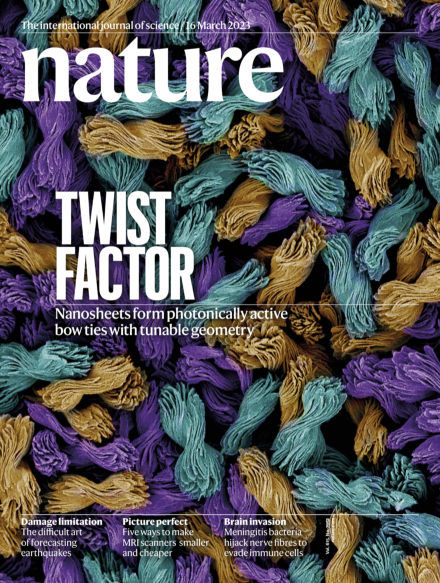Volume 615 Issue 7952, 16 March 2023
This Week
-
Editorial
-
-
World View
-
Research Highlights
News in Focus
-
News
-
Features
Opinion
-
Comment
-
Correspondence
Work
-
Feature
-
How to wrap up research projects gracefully
Career Guide:
-
-
Technology Feature
-
Where I Work
Research
-
News & Views
-
Articles
-
Matters Arising

